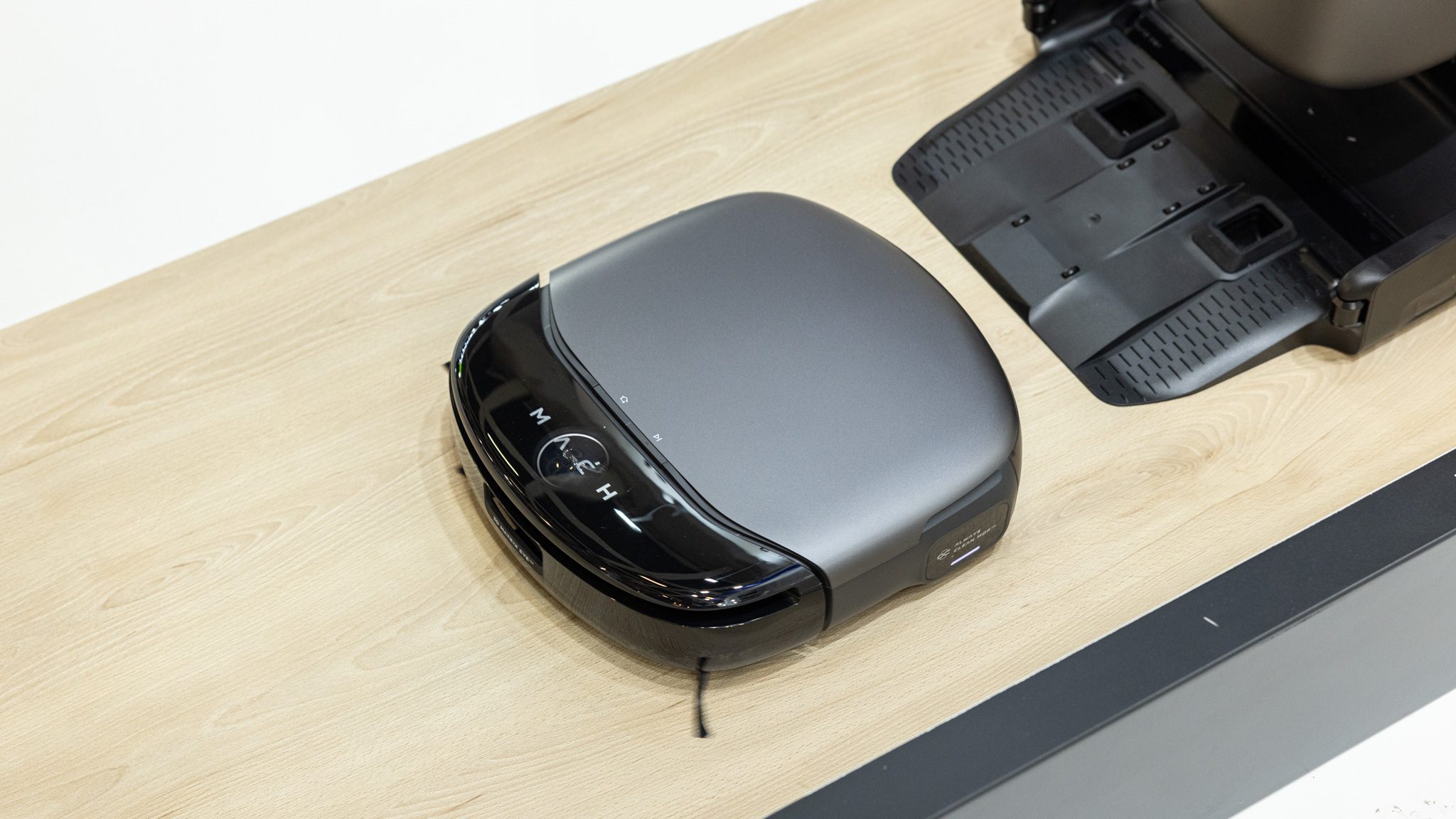
The Anker Mach R1 does many things differently than previous mopping and vacuuming robots—from the wiping technology and navigation to the design of the base station. nextpit already had initial contact with the Mach R1 at IFA 2023, and it is already one of the most exciting robot vacuum cleaners of 2024.
Design and build quality
The Mach R1 looks completely different from the other vacuum robots made by Anker’s sister brand Eufy. No wonder: It is developed – from design to hardware – by a completely separate team. There’s a good reason for that.
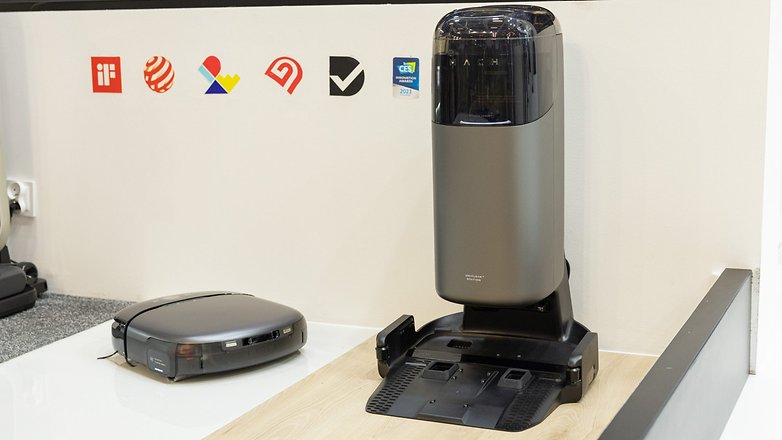
At first glance, the suction robot with its base station is not so easy to spot: What is this thing anyway? The station is extremely high but quite slim. The round, curved design is also atypical. In “normal” vacuum robots, the suction stations are relatively angular in design.
At the very top of the station sits the tank for clean water, which can be removed with a handy handle. Behind it is a slot for a canister with the cleaning agent, which the Mach R1 automatically adds to the mopping water. Finally, under the water tank is a flap under which the dust bag is located. Finally, an elongated tank sits on the back of the station, where the dirty water ends up.
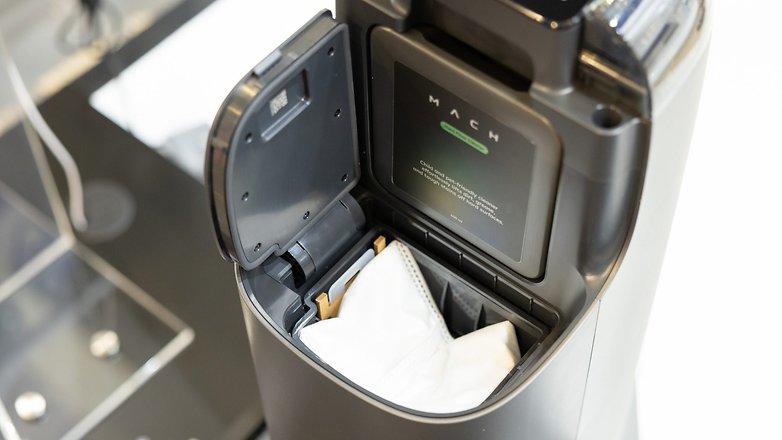
You can already guess from the features: The Anker Mach R1 runs very automatically, which the manufacturer also underlines with the name addition “Always Clean”. Similar to the Narwal Freo nextpit reviewed a few months ago, there’s a small touchscreen on the top for starting and stopping the robot and selecting the cleaning program.
And the vacuum robot?
We continue with the Mach R1, which also looks untypical for a high-end vacuum robot. Have you noticed what’s missing? The LiDAR tower—but we’ll get to that in detail in a moment. Otherwise, the design language of the station is continued sensibly in the vacuuming and wiping robot itself. The front of the vacuum robot is made of semi-transparent plastic and the back of matte gray plastic.
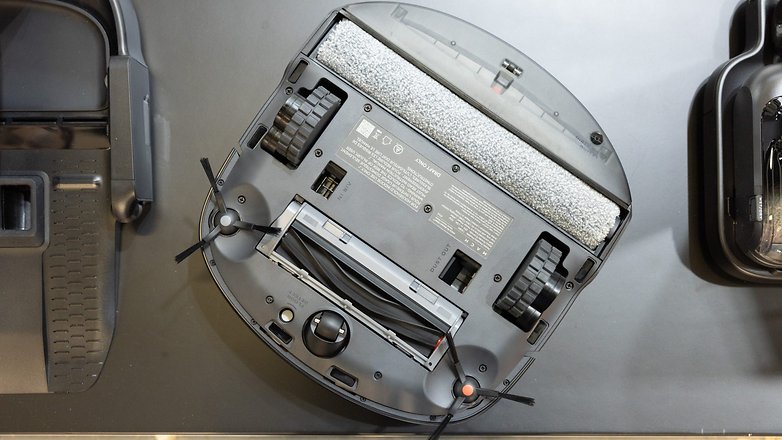
Turning the Mach R1 over gives you a first look at the cleaning features. At the front, there are two rotating brushes that scoop dust and dirt into the suction unit. This then sucks the dirt into the integrated tank at 4,000 Pa. Speaking of which, there are two more tanks in the Mach R1—one for clean water and one for dirty water. We haven’t seen the latter in any other mopping robot so far.
Navigation and wiping performance
Apart from the dirt tank, the Anker Mach R1 also relies on a few extraordinary technical solutions that we have not seen in any other cleaning robot so far. This also applies to navigation: Despite LiDAR, the Mach R1 does not need a laser tower that would prevent the robot from crawling under flat sofas and cupboards.
Let’s first turn to the wiping function: all current robots rely here on either plates or two rotating mop pads. These are moistened either by a water tank integrated in the robot or at the station and then damply mop the floor.
The Anker Mach R1, however, relies on a roller that rotates clockwise, as shown in the following picture. On the left side between the two wheels sits the tank of clean water that moistens the roller. The roller section is moistened with fresh water then runs over the floor and then past the dirty water tank. Here, the dirty water is then wiped off and collected.
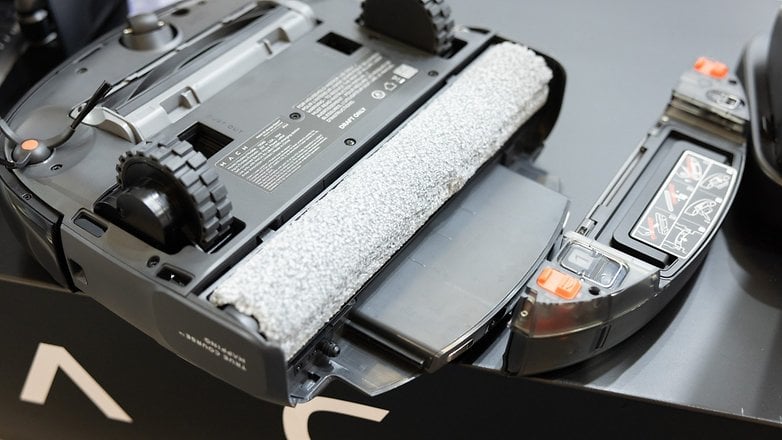
As an Anker engineer explained to nextpit, this has a particular advantage in that sand and other fine particles are collected and not permanently rubbed across the floor. Especially with wooden floors or shiny stone floors, this should prevent fine scratching and the associated clouding of the floor.
After the cleaning process, the Mach R1 returns to the station, which vacuums the dirty water as well as rinses the brush once more and then dries it. Incidentally, the fresh mop water filled into the station is enriched with ozone via a platinum catalyst, which is supposed to have a disinfecting effect.
Finally, the station naturally also vacuums up the dirt particles that the robot has sucked in. The station contains a dust bag for this purpose, which you have to replace regularly.
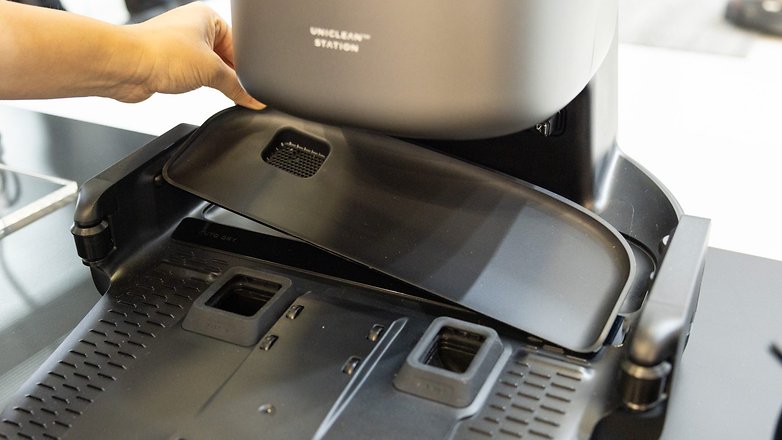
A special feature of the Mach R1 is also the navigation. We have already mentioned the missing LiDAR tower—which, however, is not missing at all, but has simply slipped down into the housing of the vacuum robot. If you take a close look at the front of the robot, you will discover a slot through which the LiDAR sensor gets a 270-degree view.
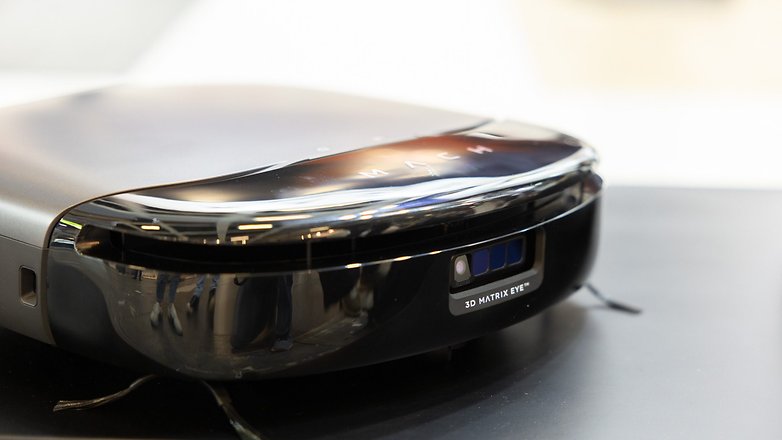
In addition, there is a time-of-flight camera on the front that continuously generates a depth image of the surroundings. By the way, this ToF module is not suitable as a surveillance camera: The image has a very low resolution. On the other hand, the active camera provides a depth image even in absolute darkness. The manufacturer does not use an RGB camera for privacy reasons.
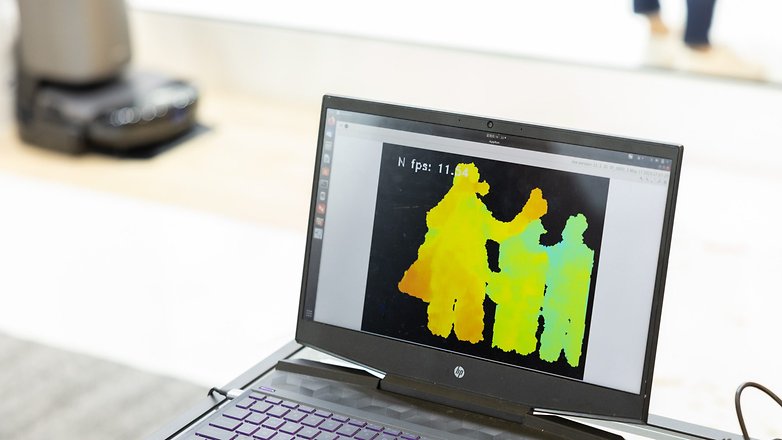
As far as we could see on the IFA setup and on a video from the living room of a Mach engineer, the navigation works impressively well. When the robot traverses edges and corners, it literally sticks to the wall. I have never seen this level of performance from any other robot vacuum cleaner, and I am curious to see whether the Mach R1 will perform just as well in nextpit’s review.
Incidentally, the Mach team at Anker includes numerous engineers who previously worked at DJI—not on drones, but on the self-driving car project.
Early Verdict
So what is the reason for the Mach R1 being developed by a completely dedicated team? It’s simple: Anker has set out to put innovation at the forefront of its flagship vacuum robots and wants to give the Mach team the means to reinvent the wheel if necessary.
The result is the Mach R1, one of the most exciting robotic vacuum cleaners with mopping capabilities for the coming year, that much is already certain. From the ozone-enriched water to the permanently fresh-water-moistened wiping roller to the impressive navigation, the robot vacuum takes great pains to throw out the old familiar in numerous areas. The Mach R1 is definitely high up on our list of “must-try” products.






